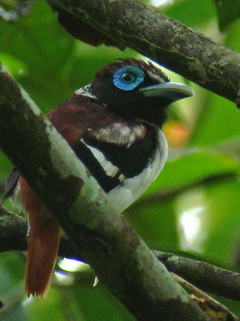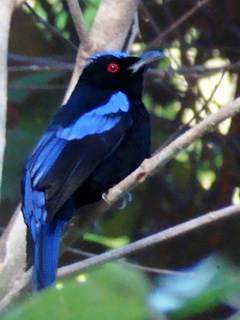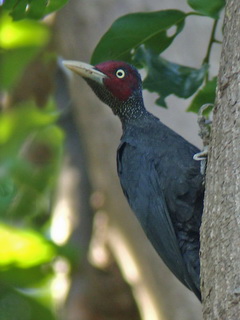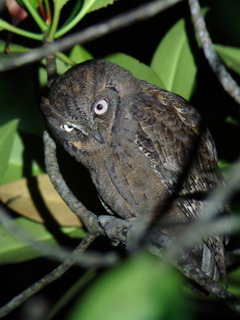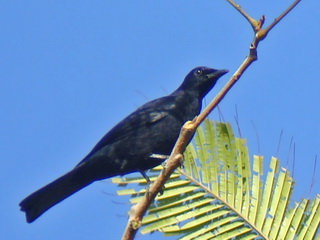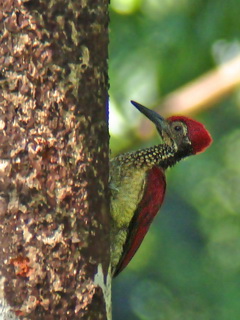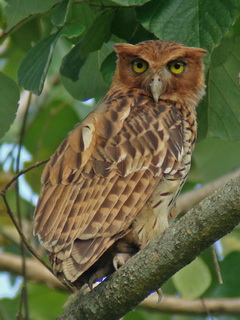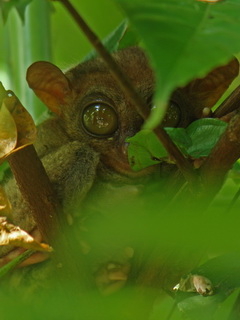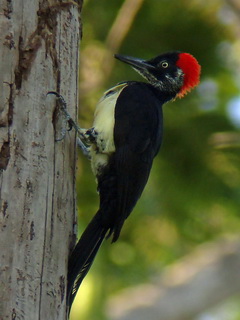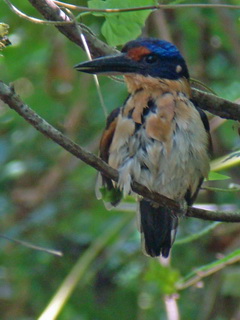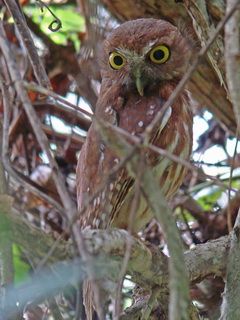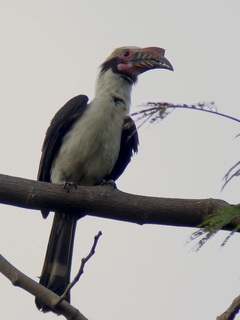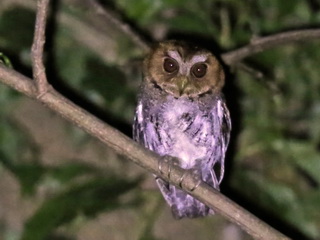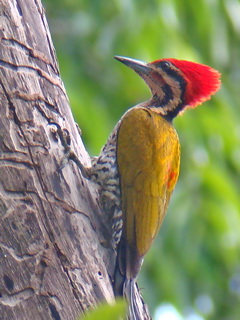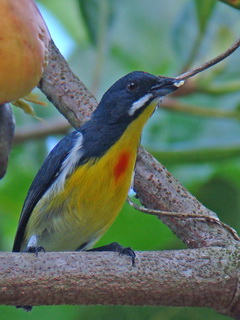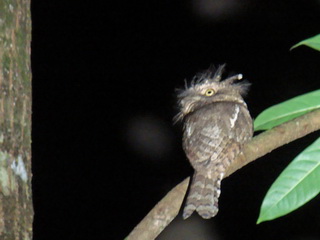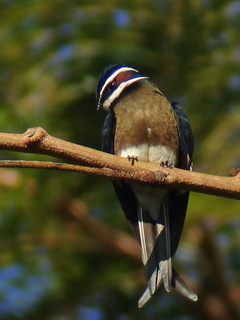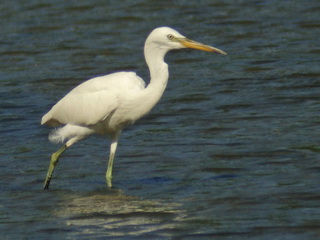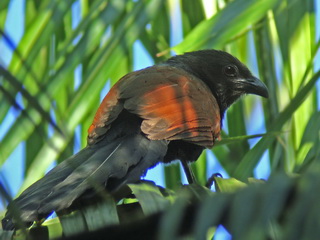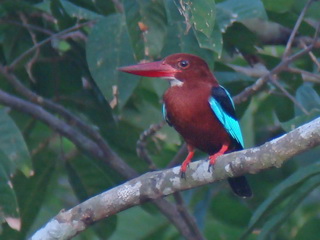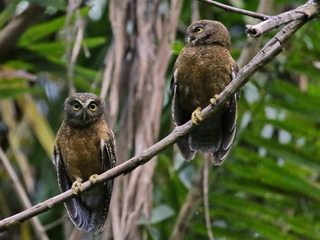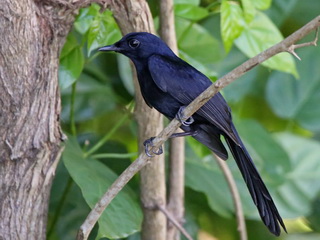B2A Philippines 2015 tour
reports.
Luzon, Bohol, Cebu, Palawan, Mindanao and Negros
1 February - 8 March (2 main tours + 2 extensions)
Participants tour 1; Leo Borch,
Birgitte Noerregaard, Ole Frederiksen,
Richard Johnstone, Jill and Paul Rendell.
Participants tour 2; Liz and Dick
Turner, Vincent and Diana Lovell,
Hannes Schiechl, Leo Montsma, Johan Westerlaken.
Tour leaders; Stijn De Win & Pete Simpson
Candaba, Subic,
La Mesa, Angono, Makiling, Rajah Sikatuna NP,
Alcoy Nug-as Forest, Mt. Kitanglad, Davao, Picop
Sabang-Underground River, Irawan, Zigzag
Two successful tours, two nice groups, lots of brilliant birds, been lucky with the weather, everything was organized meticulously etc. I may not continue writing like this. I’ll give this report a happy twist.
Wouldn’t it be nice to do a tour report with focus on the birding sites and what they had on offer? Would it perhaps be more interesting for our readers to get a real feel of the birds that do occur regularly at the various areas visited on all Philippine tours? Pick your choice as you wish. I think it may add value as compared with the standard tour company report. Or in other words you may take it we did not score birds, we didn’t clean up, collect, nor counted exact numbers or did do clean sweep sets or places. We went birding dirty but not ugly. The birds came our way and we spectators welcomed them warmly. Pure enjoyment and true respect is the way to go. Birds are magic and as we all know it’s irresistible. Anyhow, I’ll give it a try in this report and the good thing is that I can merge sightings of both our February 2015 tours in this one report.
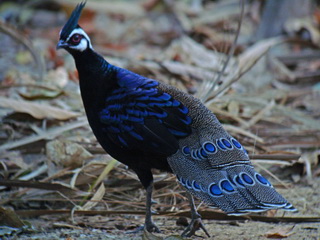
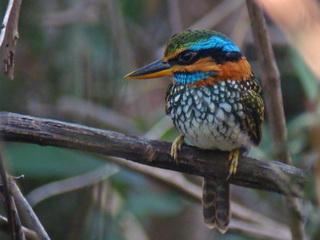
Palawan Peacock Pheasant, Sabang Underground RiverSpotted Kingfisher, Subic
La Mesa Ecopark;
The obvious little start to a tour but dangerously close to Manila I’d say. This makes it feel like an oasis but unfortunately this doesn’t say much about the park. It says everything about the city. The contrast is enormous and one would almost think this is a nice park. It is interesting at best. For the Ashy Thrush yes. For a little interaction and a good introduction to the friendly and jolly people of the Philippines for sure. The Ashy Thrush is the only bird in the park you would not likely encounter in ‘nature’ later on the tour. They are easy to see as the one pair will come and look for you. They’ve got used to people and especially photographers. You just need to know the exact spot!! From the park entrance walk about 200 meter down the road and turn right just after the rectangle shape pond. Walk 50 meter along the pond then turn left and you’ll see a little foot bridge across a small stream in this wooded area. Scan the surroundings and especially the forest floor. See that Thrush pop and hop. You are now entitled to a quick escape from the city. All the other park birds are readily available at other nice birding sites. The Indigo-banded Kingfisher in the park did only show for the tour leader nah. Skittish individual. Good the birds at Makiling performed for both our groups, at the river in the botanical garden.

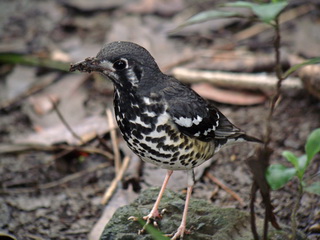
Palawan Flycatcher, near SabangAshy Thrush, La Mesa Ecopark in Manila
Candaba Marsh;
Poehh, bit of a story really. As usual on approach people
start to wonder where we are going and how ever I can find
such a place. This may help; Link
to Google Maps location.
When we get there it’s full of birds. Easy birding in open
marshland. Candaba is a tiny spec in an enormous plain which
otherwise is mostly converted to rice. The 1 pond left that
can be called a marsh still is an avian magnet. Birds have
nowhere else to go. On the other hand one would wonder how
birds manage to find this dot in a sea of rice fields.
One of the first birds we found was a male Bear’s Pochard.
Being critically endangered we could rather question how one
of the last Bear’s Pochards could have found this last
remaining hectare of suitable duck habitat? Excellent
navigation and so well done I must say. On our second tour 2
males were present. This is a good number considered there
may be as few as 150-700 individuals left in this world…
Also the water level at Candaba had dropped significant on
our second visit 3 weeks later. No more open water. Drained.
One corner of the marsh converted to rice already. Soon
there will be nothing left but green desert. Ironic. Did you
know the Philippines will import half a million tons of rice
this year? That’s a 500 km line of fully loaded trucks… this
world.
For now the marsh still held plenty endemic Philippine
Ducks, several Wandering Whistling Ducks and lots of
wintering ducks incl. 100s Common Teal and Garganey,
Northern Shoveler, Pintail etc. We even found Gadwall and
Eurasian Wigeon which both were my first records in the
Philippines. Anyhow, birders from Europe might not be
looking for those so I better talk about the Black Bittern,
Yellow and Cinnamon Bitterns, Philippine Swamp Hen, Eastern
Marsh Harrier, White-browed Crakes, Barred Rail, Oriental
Pratincole, Clamorous Reed Warbler, Blue-tailed Bee-eater,
Dusky Warbler, Painted Snipe and the Japanese Leaf Warbler
(the yellow-tinged Arctic one)…
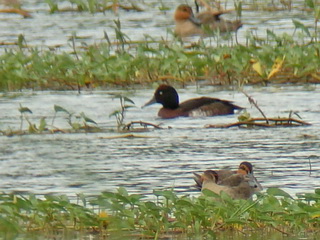
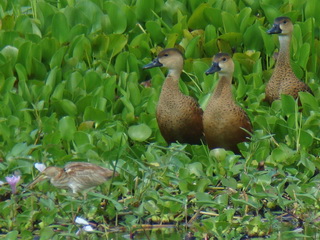
Bear's Pochard, Candaba MarshWho needs binoculars for watching a Yellow Bittern.
Not these Wandering Whistling Ducks.
Subic;
Subic remains nothing but a love story. Well protected forests, plenty bird activity and some real good targets. All easily accessible and safe with enjoyable short walks the norm. You can read it all on my info pages incl. Subic checklist.
On both our tours pretty much all the Subic birds did a
good job showing themselves to us. It is particularly
heartening to know the Green Racquet-tails are still doing
well at their last stronghold. Other top specialities remain
fairly common and easy to find on condition enough time is
spent in the right spots; Blackish Cuckooshrike, Sooty
Woodpeckers (one found nesting), Luzon Flameback, Rufous
Coucals, Red-crested Malkoha, Blue-naped Parrot,
White-browed Shama (elusive but showing well again with a
very nice song truly enjoyed by all), Spotted Wood
Kingfisher (a male first tour performed so well it got
granted bird of the trip status for a while).
Further it was good to encounter Philippine Falconet on
quite a few occasions as last year we had only found them on
1 spot at Hill 394… a place now with difficult restricted
access. Luzon Hornbill were still present in good numbers
but Philippine Green Pigeon were few, perhaps due to
seasonal movements in search for forest fruits. The mighty
White-bellied Woodpecker drums away strongly still and we
enjoyed both Bar – and Beer-bellied Cuckooshrikes.
Now that we are on common birds it must be true that some of
those actually are amongst the best at Subic; Guaiabero,
Whiskered Treeswift, Rufous-crowned Bee-eater, Coleto,
Elegant Tit and last but not least the Stripe-headed
Rhabdornis.
And oh yes, birding mustn’t be too easy all the time, some
joy lies in the search right. The enigmatic and hard to find
White-fronted Tit gave us 50% with good views on the second
tour only. Blue-headed Fantail was for the first tour only
but luckily this is more regarded as a bonus species rather
than a target at Subic. Owling too was half successful but
we could catch up at Makiling. Same for Scale-feathered
Malkoha, scarce at Subic and only heard but showing well at
Makiling.
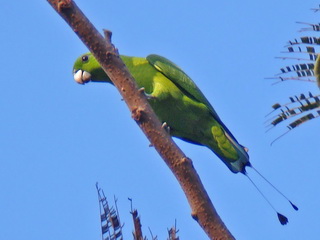
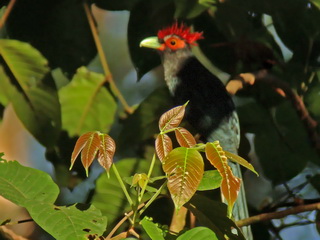
Green Racquet-tail, Subic BayRed-crested Malkoha, Subic
Angono;
Perhaps my best visit ever on the first tour with the whole
family Philippine Eagle Owl present. Fully grown chick on
the nest still and both parents perched nearby. Papa sat
fully in the open. You’d expect to quick and easy repeat
that 3 weeks later but the young fellow had flown and the
owls had taken residence at a nearby –out of reach- spot.
This is part of respect; accept that sometimes it simply is
up to the birds. Manage this and it will make you a happier
birder. Beers with dinner were just as tasty and plentiful
that evening! Owls
at Angono Petroglyphs Google maps location.
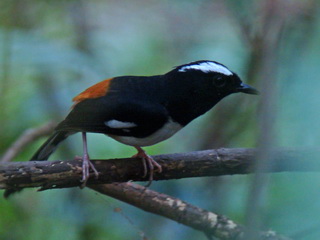
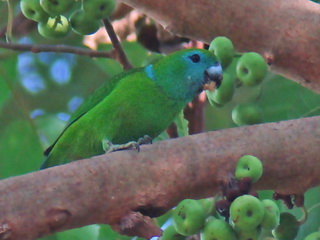
White-browed Shama, SubicGuaiabero, Subic Bay
Makiling;
This is a place which is always good for finding some
specialities and with overlap in species it definitely comes
as a handy backup for certain Subic species. That said
birding can be quite slow, the forest track busy with locals
and the walking comes slightly uphill. Not that this would
be much of a problem just always remember; Subic first, then
keep Makiling for a few target birds rather than a place
where you would like to enjoy the full set available.
Goodies we confirmed to be home at Makiling included
Scale-feathered Malkoha, Flaming Sunbird, Striped
Flowerpecker, Buzzing Flowerpecker, Philippine Trogon,
Grey-backed Tailorbird, Sulphur-billed Nuthatch,
Black-chinned Fruit Dove and Yellow-wattled Bulbul; all on
the forest track and not seen in Subic. Of course many birds
shared with Subic did also show; Luzon Hornbill, Philippine
Falconet, Bar-bellied Cuckooshrike, Pygmy Flowerpecker, Ashy
Minivet, Colasisi…
The water level in the river below the bridge on the campus
of Los Banos was quite low. So, the one thing to do if
Indigo-banded Kingfisher is absent is to check the river in
the botanical garden where it showed for us on both tours.
The track through the fields at the dairy farm is a
long-time and pretty famous stake-out for the endemic
Spotted Buttonquail. Just position yourself and wait at
around 4-5 pm for a bird to cross. Well we didn’t wait on
the first tour; a nice female was already busy taking a dust
bath on the track as we arrived. This gives us time for the
extra visit to the rice irrigation area which is always good
for Oriental Skylark, Buff-banded Rail and Barred
Buttonquail. On our second tour we got in position again on
the Quail-track and there was another tour group present as
well; the birds never showed. You know I always include
plenty of luck in our package deals, however for extras
guests would still be responsible for bringing some of their
own luck ☺
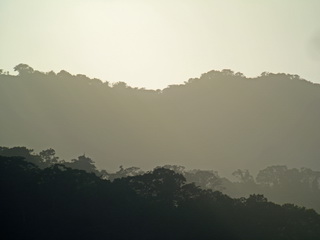
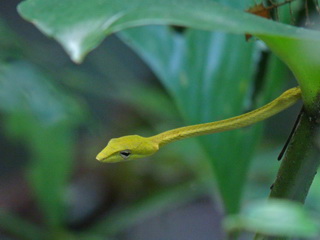
Mount Makiling forested slopesOriental Whip-Snake, Makiling Botanical Garden
Bohol;
Detailed birding info on our website.
Time of year and local conditions at any time certainly
play a role for birding at Rajah Sikatuna forest on Bohol. I
have never seen the place better than on our first tour.
Just brilliant.
Bohol was not visited on the second (main) tour but we did a
Visayan extension which included a short stay for the
specialities otherwise not found at Picop. This was early
March and usually a very good time to visit (Negros and Cebu
had been excellent days previous) however we found the
forest to be much drier than a month earlier and birding a
lot harder with much less bird activity. Anyhow we managed
to see most targets (those left after Picop) in a day and a
half on the extension.
On the first tour just about everything came our way in 2
and a half days although I must say the last half day came
pretty important with Steere’s Pitta finally showing and my
best ever encountered performance of Visayan Wattled
Broadbill. A family party lingered for half an hour close by
and at eye level. I even had the time to go get my camera
left in the car 300 meters away. Further, the well protected
forests provided with the classic delights; Silvery
Kingfisher, Black-faced Coucal, Rufous-lored Kingfisher,
Philippine Trogon, Streaked Ground-Babbler, Yellow-breasted
Tailorbird, Black-crowned Babbler, Philippine Fairy
Bluebird, Philippine Oriole, Samar Hornbill, Red-bellied
Pitta heard, Visayan Blue Fantail… and even a surprise Ruddy
Kingfisher and daytime Philippine Hawk Owl.
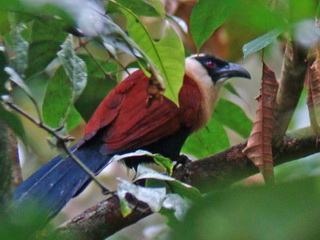
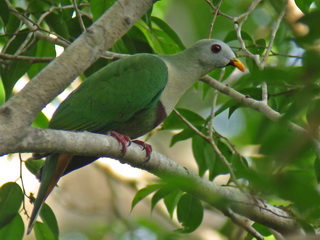
Black-faced Coucal, BoholBlack-chinned Fruit Dove, Bohol
Cebu;
Google maps location of Nug-as forest (Alcoy).
Out of only two sites with some forest left on Cebu, Alcoy definitely is the more pleasant place to visit with easy roadside birding. The endangered Black Shama is still present with several breeding pairs. They had no problem showing to us and possibly even beat our record; alight and delight, within a minute on both tours. Our discovery of a Cebu Hawk Owl pair which performed for us in the daytime was a dreamtime bonus. Handsome Sunbird is another favourite not too often encountered at other sites. Plenty other birds were confirmed at home again in Alcoy. And they make the island well worth a stop-over indeed. White-vented Whistler, Philippine Blue Flycatcher, Visayan Drongo, Black-chinned Fruit-Dove, Pink-bellied Imperial Pigeon, Pygmy Swiftlet, Elegant Tit, Philippine Coucal, Red-striped Flowerpecker, Magnificent Sunbird… and on the return journey to Cebu city we enjoyed finding the endangered Chinese Egret (for Richard yeah). The return journey on the second tour extension was different because we did visit out of Dumaguete on Negros. It enabled us to stop and look for fish…eh –how about the biggest fish in the world; the Whale Shark. On a birding tour we still call this a bonus. How much better can a bonus get?
Cebu
Hawk Owls, AlcoyBlack
Shama, Alcoy-Cebu
South-east Asia in the Philippines. Birding on Palawan is quite straightforward not to say easier than in the rest of the Philippines. On our first tour, it was visited as a 5 day extension guided by some excellent guides from the local Bird Club. Priced lower than any regular main tour this extension is super value for money. It is also real pleasant and super relaxed with great food and scenery. You even get to see the famous ‘Underground River’, one of the 7 new wonders of nature. And no worries as time after time just about all the target species are willing to enhance your holiday! Just check the accommodation photo on this page and you will know what I mean with ‘a Palawan vacation’.
On our second trip Palawan was included in the main tour itinerary. For a classic short tour with focus on finding the endemics we went for a more intensive shorter visit. This did not shorten the trip list neither cut it out the midday swimming and rest during the hot hours. We did work hard though at the important times of day and also the local guides did a great job again. Just about any time we went on a trail or down the road for something special, birds just seemed eager to show themselves. This was catwalk birding. We started on the road from Puerto Princesa to Sabang with one of the more difficult species. Or so they said. After Palawan Flycatcher had posed as it did like on the photo on this page you must realize we did feel little pressure. And so we went on an easy roll of superb target species; Palawan Tit, Palawan Hornbill, White-vented Shama, Spot-throated Flameback, Palawan Crow, Hill Myna, Palawan Flowerpecker, 5 Philippine Cockatoos, Blue-headed Racquet-tail, Great Slaty Woodpeckers, Dark-throated Oriole, Pale Spiderhunter, Fiery Minivet, Yellow-throated Leafbird, Ashy-headed Babbler… In the evening both Palawan Scops Owl and Palawan Frogmouth showed in less than an hour owling. Of course this is like owling should always be and quick hits are always a relief with a superb dinner and beers waiting back at the resort ✌
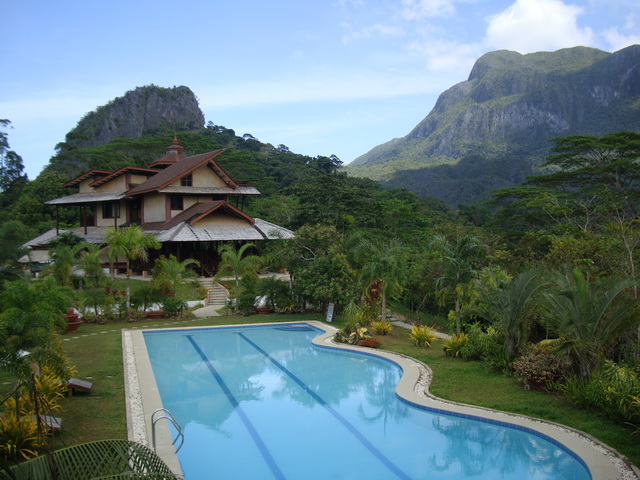
Photo made from the room's balcony; this is our birding base on Palawan!!!
The next day we first visited the Subterranean River National Park. We enjoyed Palawan Peacock Pheasant, Philippine Megapode, Hooded Pitta and Stork-billed Kingfisher in tranquil settings. When the crowds arrived we had the opportunity to visit the cave by boat but not before our tourist guide had showed us a Chestnut-breasted Malkoha. After another great local buffet lunch we made our way back towards Puerto Princesa. Irawan Ecopark is a relatively new birding destination here and a good alternative to Iwahig. Blue Paradise-Flycatcher and Palawan Blue Flycatcher put in appearances in addition to enjoying again many of the same Palawan goodies we had seen earlier on the trip. Also this day was rounded off by perfect views of a cooperative (eventually…) owl. Being a small island specialist, Mantanani Scops Owl made us explore his tiny islet home. I can think of birding experiences that would give a less tropical paradise feel…
A last morning was spent first at the old Zig-Zag road (Google maps link). This is also the site where I had found the second Tiger Shrike for Philippines in 2011. (Link to article) On this tour Melodious Babbler was an expected target here. A friendly Black-chinned Fruit-Dove showed beautifully. Definitely hoped for but less expected was our find of a Red-headed Flameback. This enigmatic and good-looking Woodpecker can be hard to find at times and isn’t for nothing one of the most sought-after Palawan endemics. No need to hide its also one of my favourites. Anyhow, after you find the first one… as usual things may become easier and we got another pair later that morning at Irawan. We also stopped at a bridge overlooking mangroves which is a good stake-out for Copper-throated Sunbirds of which a couple showed well (Google maps link) before we headed back to the airport for our afternoon flight to Cebu.

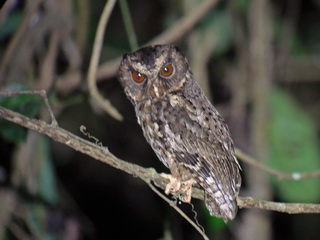
Red-headed Flameback, IrawanPalawan Scops Owl, near Sabang
Mindanao;
A full daily account written by Pete you may find on our additional
tour page. [click]
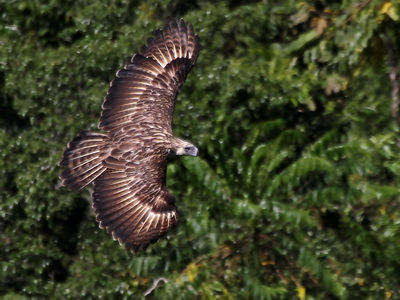
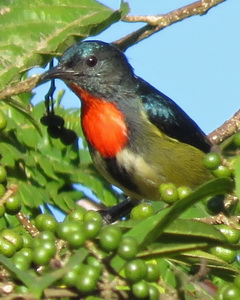
Philippine Eagle, Davao-Photos by Pete Simpson-Fire-breasted Flowerpecker, Kitanglad
This report is not yet complete. Full account for Negros is to follow.

